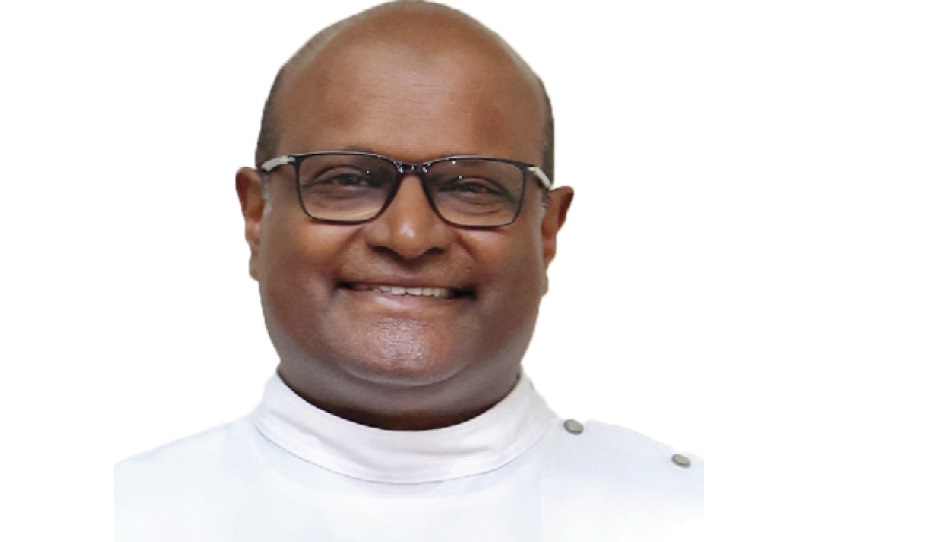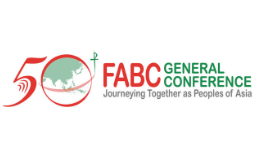Hope, by way of gratitude in the Spirit
St Paul, in his letter to the Philippians, begins with a “song of thanksgiving.” He states, “I give thanks to my God at every remembrance of you, praying always with joy in every prayer for all of you, because of your partnership for the Gospel from the first day until now.”
Jan 10, 2025

By Fr Richard Anthonysamy SJ
St Paul, in his letter to the Philippians, begins with a “song of thanksgiving.” He states, “I give thanks to my God at every remembrance of you, praying always with joy in every prayer for all of you, because of your partnership for the Gospel from the first day until now.” And then he adds, “I am confident, that the one who began a good work in you will continue to complete it until the day of Christ Jesus.” (Philippians 1:3-6)
On Christmas Eve, our Holy Father Pope Francis opened the Jubilee Year which will end at the feast of the Epiphany in 2026. More than 12 months set aside for this pilgrimage of hope. All Christians are identified as Pilgrims of Hope, whether we go to Rome and walk through any of the four main Holy Doors found in Rome (Basilica of St Peter, Cathedral of John Lateran, Papal Basilica of St Mary Major, and the Papal Basilica of St Paul outside the Walls).
The opening of the Jubilee Year of Hope on Christmas Eve ties in well with the mystery of the Incarnation. Through this mystery, God becomes a man through Jesus Christ. He, who is our Hope, dwells among us. Our own hope, too, must be made incarnate. It must be given flesh and allowed to dwell among others. It is not merely a state of mind and a theological buzz-word for the Jubilee Year to be called Pilgrims of Hope. It is a journey of hope in the real world.
St Paul’s “song of thanksgiving” provides a useful framework and perspective for each pilgrim of hope. St Paul begins with gratitude and thanksgiving. He gives thanks to God as he remembers his fellow Christians. He sees them in God and God in them. He remembers them with thanksgiving because of their partnership with the Gospel. In other words, St Paul remembers them as pilgrims of faith, striving to live the hope their faith brings. It is more than friendship or fellowship. It is “friendship-in-the-Lord.” St. Paul feels hopeful when he remembers them.
The question to all of us pilgrims of hope then is: am I beginning the journey with gratitude and thanksgiving? What are the things I am grateful for, that I am thankful for, even as I hope for the future? Our past and present serve as experiential truths to where we are, even as we hope. Given a chance to speak in the depths of our hearts, our past and present experiences will reveal useful guides for the journey we embark on this Jubilee Year.
Pope Francis, in the Bull of Indiction entitled Spes Non Confundit (Hope does not disappoint) writes, “Everyone knows what it is to hope. In the heart of each person, hope dwells as a desire and expectation of good things to come, despite our not knowing what the future may bring.” Here we see the inner tension. On the one hand, the joy or excitement of hope motivates and encourages us to look up and forward to good things. On the other hand, embracing the uncertainty of the future even as we look forward in hope. The words of the Holy Father situate hope as an experiential hope. Thus, through our lives and actions, we enflesh the hope we feel within us. We allow that hope to flow out to others. It is tangible and is felt by ourselves and those around us. This participation in life of hope is what St Paul would see as God bringing to completion the good works He has already started in us. By so doing, we allow the Holy Spirit to work in our lives. Pope Francis states, “By his perennial presence in the life of the pilgrim Church, the Holy Spirit illumines all believers with the light of hope. He keeps that light burning, like an ever-burning lamp, to sustain and invigorate our lives.” The good news is that the light of hope we seek as pilgrims of hope is already in us thanks to the Holy Spirit. We are not alone, or without hope. The challenge is to allow the Holy Spirit to lead us so that the light of hope may not only transform us but help others.
The pilgrimage of hope could be said to entail three movements from us pilgrims of hope. The first is to begin with gratitude and thanksgiving for where we are now, embracing our joys and sorrows. In this first step, we actively choose to embrace the mystery of the Incarnation in our own life. Christ too was born in hope, amidst the uncertainties.
The second would be to see the pilgrimage as one already begun in us by God through the Holy Spirit. It is the Lord who beckons us towards completion. We are pilgrims of hope towards Him. Thus each “station” of the pilgrimage, each pilgrimage church visited or spiritual exercise undertaken (prayer, fasting, almsgiving, pilgrimage, etc.) is done in Him, through Him and with Him. In other words, we make the pilgrimage with Jesus, who Pope Francis states is the “door” of our salvation.
Finally, this is a journey that leads to personal and communal transformation. It is, as the Bull of Indiction explains, one that makes people who bring signs of hope to others. It is a hope that we ourselves feel and practise.
The title of the Bull of Indiction is Spes Non Confundit, meaning Hope does not disappoint. Let us not disappoint, Hope.
(Fr Richard Anthonysamy SJ is involved in parish ministry, spiritual direction, and faith formation work.)







Total Comments:0